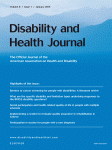Integration of Medicare and Medicaid for dually eligible beneficiaries: A focus group study examining beneficiaries' early experiences in California's dual financial alignment demonstration
In 2014 California implemented a federal dual alignment demonstration that used a capitated managed healthcare model called Cal MediConnect (CMC) to integrate medical care and long-term services and supports (LTSS) for beneficiaries with both Medicare and Medicaid. These beneficiaries often have complex care needs, including multiple chronic conditions and disabilities. By 2016, 120,000 eligible beneficiaries were enrolled in the program.
Focus groups with enrolled beneficiaries were conducted to gather rich data about their early experiences with quality of care, access to care, and coordination of care in CMC plans and to identify recommendations for program improvement.
Evaluators conducted 14 focus groups with 104 beneficiaries enrolled in CMC plans in 6 demonstration counties.
The passive enrollment process did not provide adequate information about certain aspects of CMC, leaving many beneficiaries unaware of new benefits such as care coordination, transportation, and managed LTSS. Most beneficiaries who were using the CMC care coordination benefit reported increased access to specialty care, medical equipment, and other LTSS. Changing providers and having trouble with authorization for specialty services, prescriptions, or medical equipment were common reasons for dissatisfaction. Many beneficiaries reported that early disruptions in care due to the transition of delivery system improved with time.
Similar to other studies that examine beneficiaries' experiences with delivery system change, participants were confused about the passive enrollment process and demonstrated a lack of understanding of many aspects of CMC. Analysis identified areas where beneficiaries noted improvement in their quality of care, access, and coordination of care, but also areas for improvement. Streamlining the authorization processes and extending continuity of care provisions would improve access to providers. Increasing beneficiaries' awareness of CMC plans' role in LTSS is key to improving their access to home- and community-based services.
Last modified Dec 7, 2017

